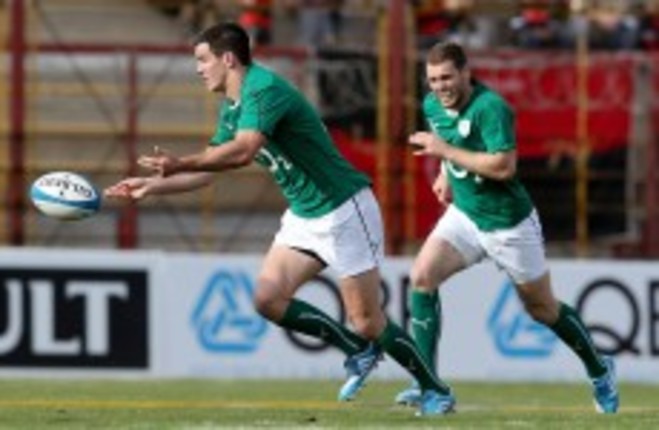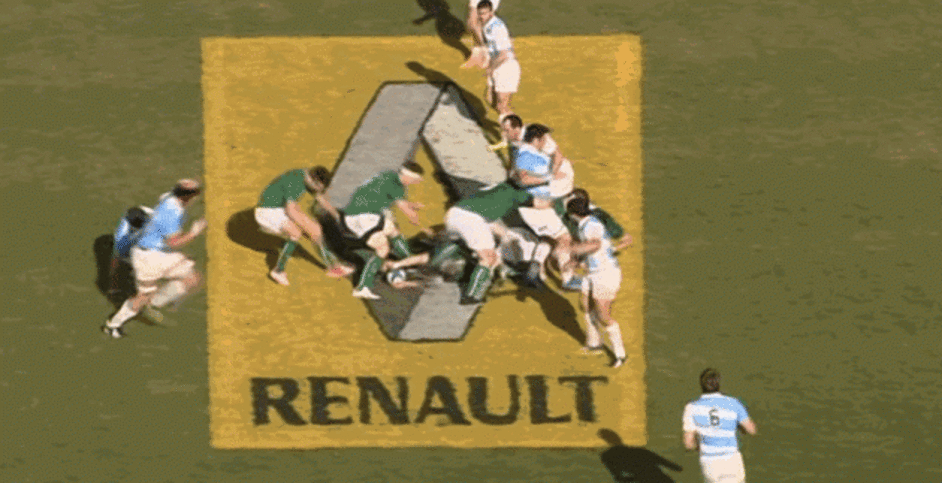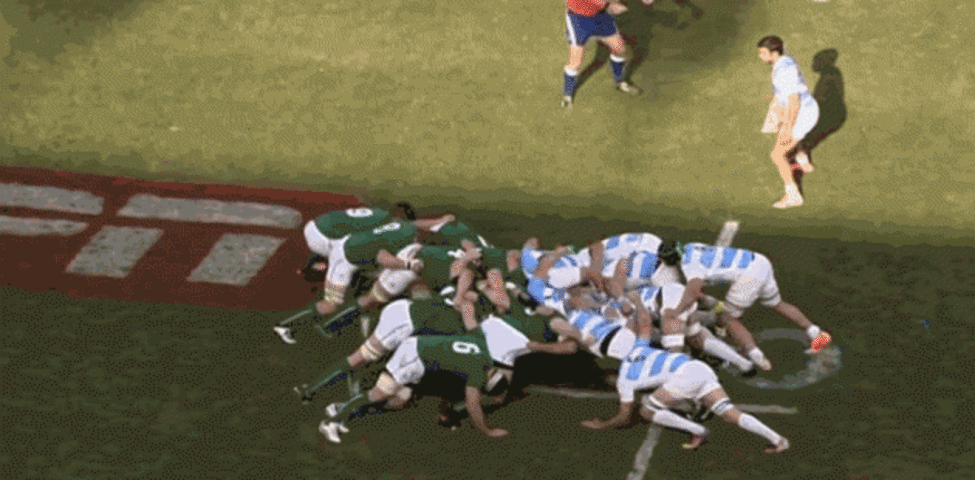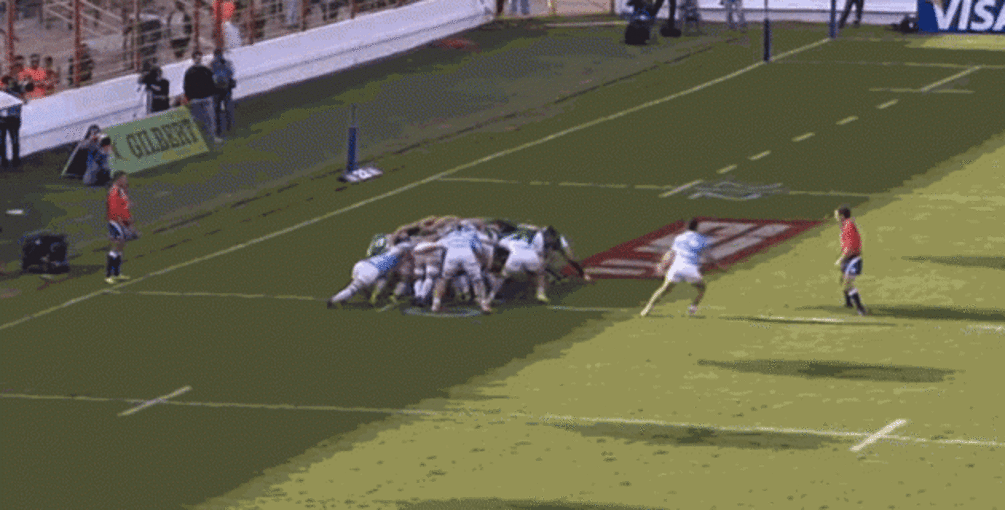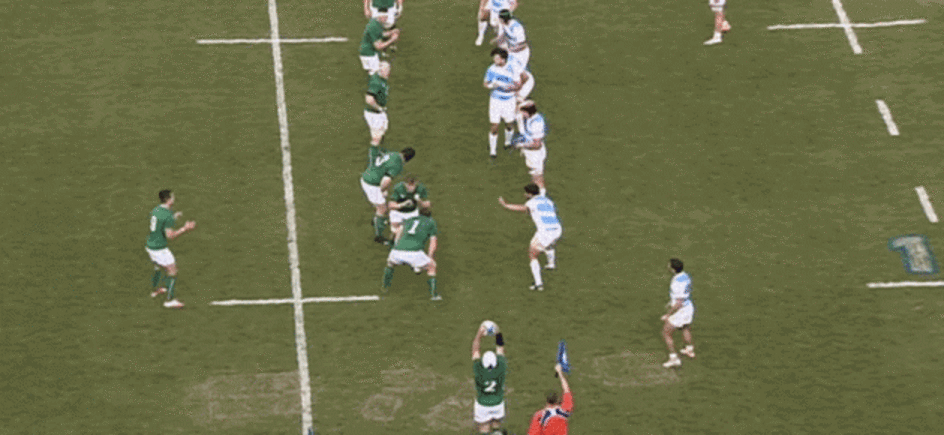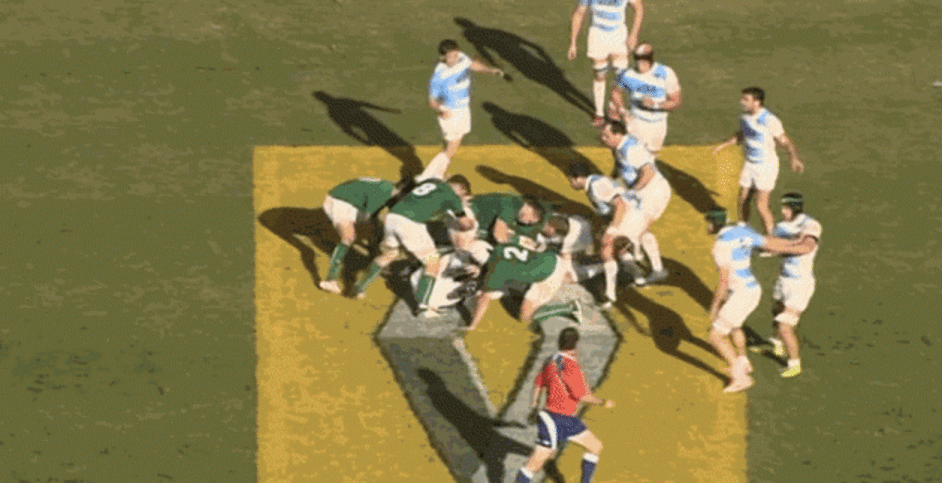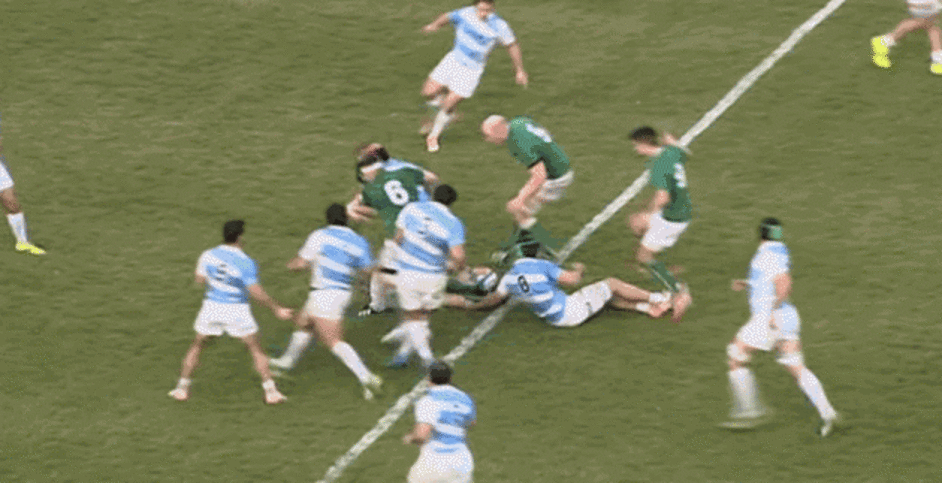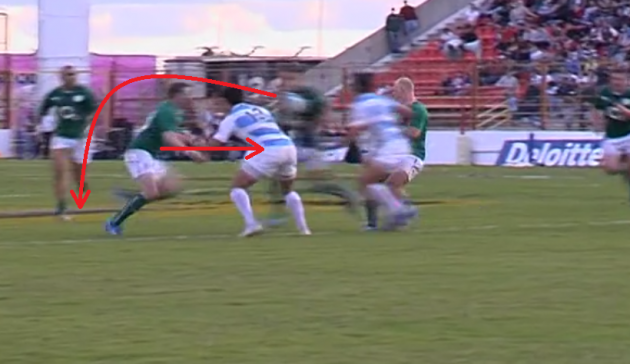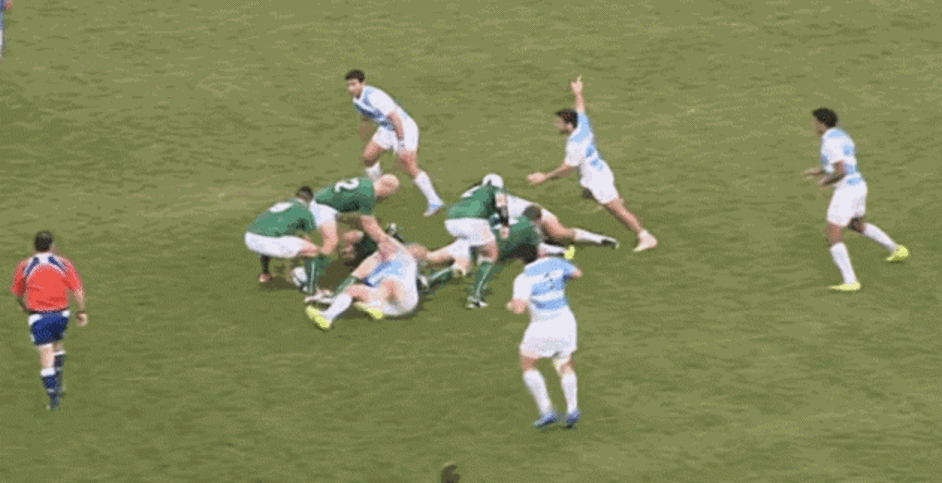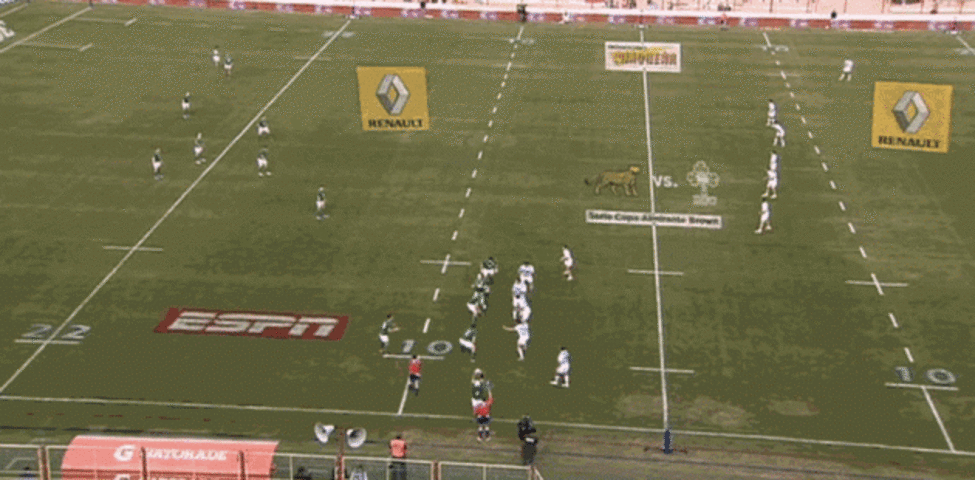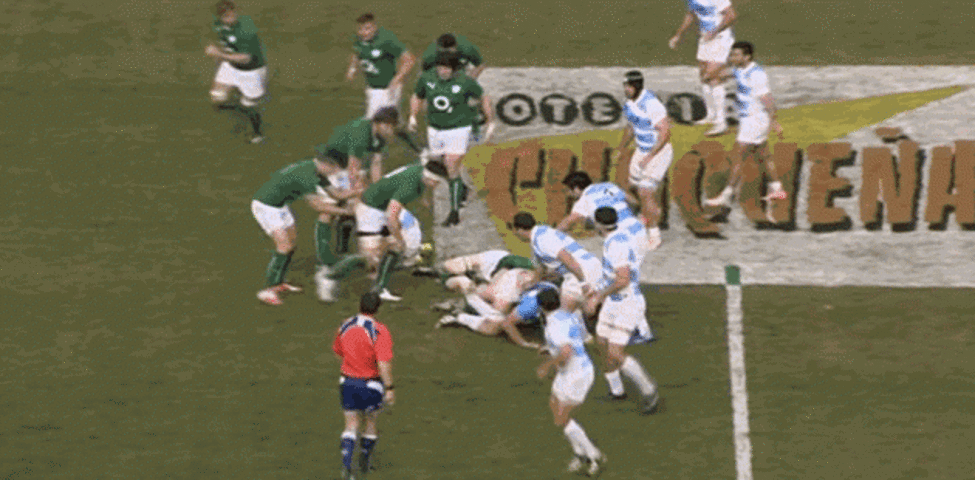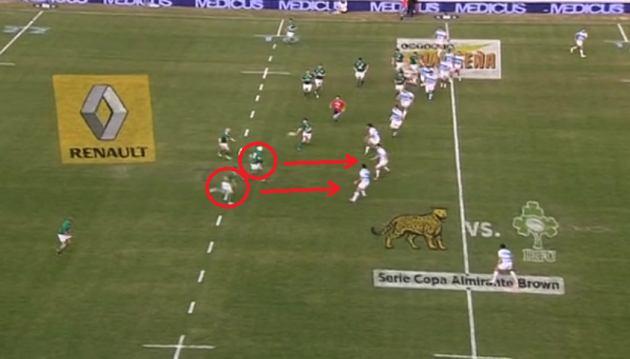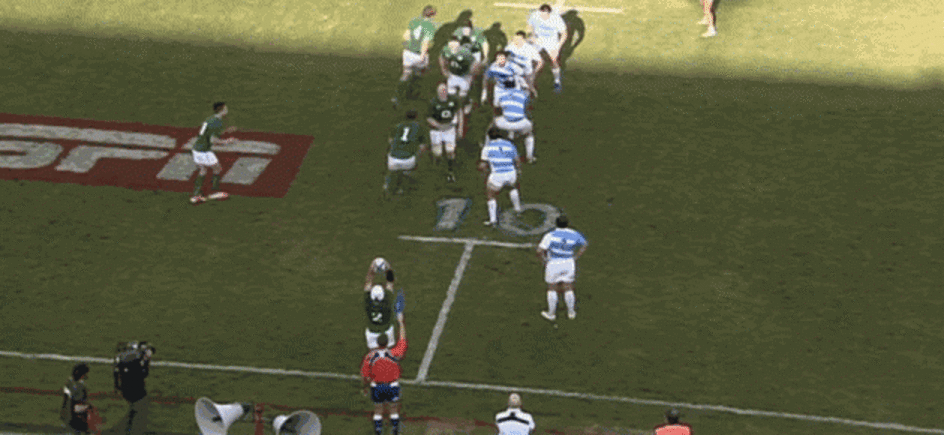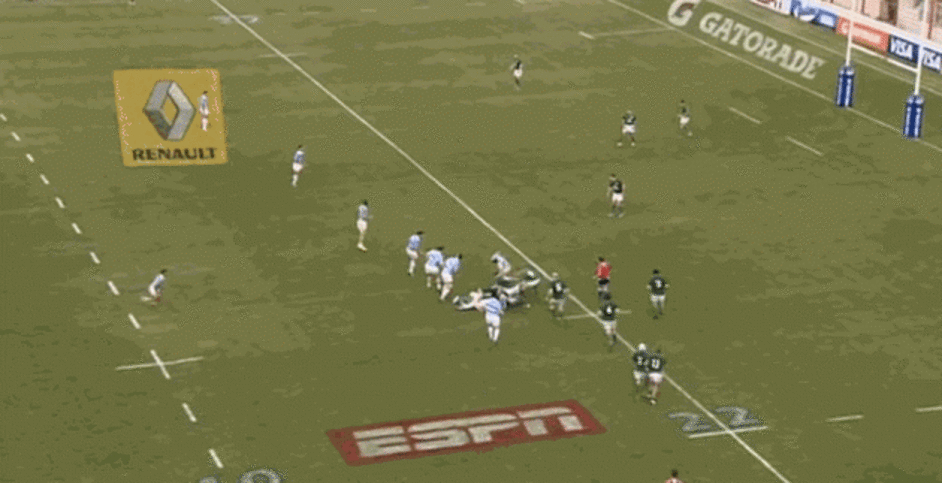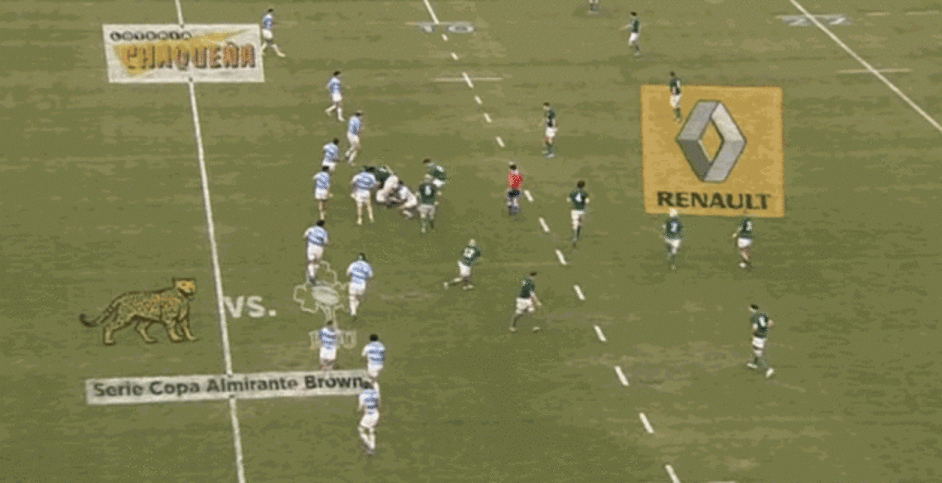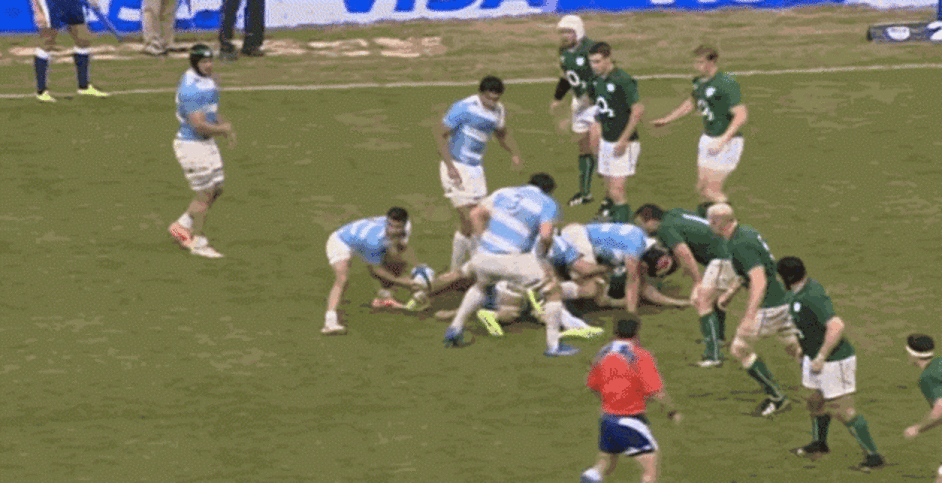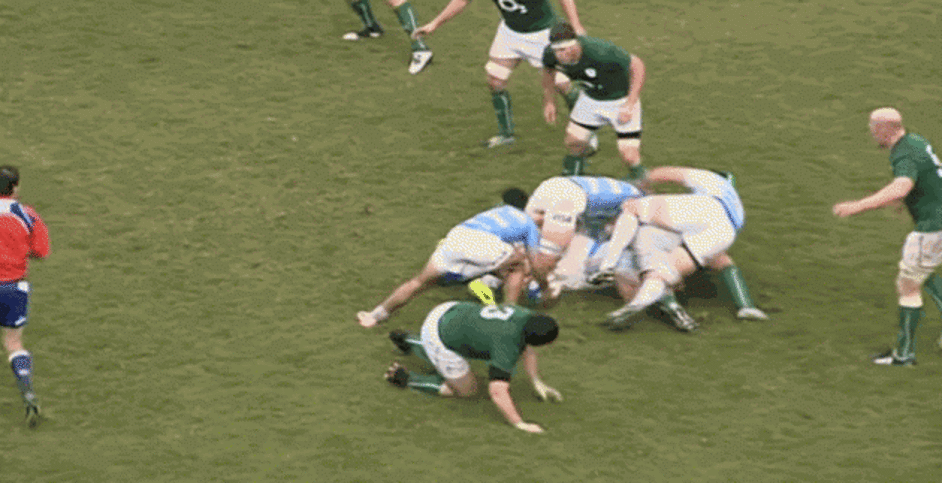THERE ARE SO many split-second decisions to be made in midfield in any rugby game that a strong understanding between an out-half and his two centres is crucial.
Experience of playing alongside each other is the obvious way for midfield players to generate an awareness of how their teammates are likely to react in particular situations.
Such an accumulation of game time is the most desirable way for a midfield trio to build an understanding, but it is not the only way. Like in any domain, some rugby players benefit from an intuitive relationship when working together, seemingly reading each other’s intent ‘naturally’.
Over recent years, Ireland have benefited from the understanding between their midfield trio of Jonny Sexton, Gordon D’Arcy and Brian O’Driscoll. Formerly teammates at Leinster, they grew their instinctive reactions to each other’s ideas through that accumulation of game time.
“We just know each other’s style of play,” said O’Driscoll of his on-pitch relationship with D’Arcy, a sentiment that could be extended to include Sexton.
“We’ve a good ability to be able to read what one another are thinking and have a lot of comfort in being beside one another. In a lot of new centre partnerships, you need communication to be a huge aspect of your cohesion.
“Whereas with us – not that there’s an element of telepathy – there’s an understanding that I don’t have with other people. I can see, having been in the situation lots of times with him, what he’s thinking.”
With O’Driscoll having retired and D’Arcy rested for the tour of Argentina, Saturday saw head coach Joe Schmidt turning to a new-look midfield trio of Sexton, Luke Marshall and Darren Cave.
Positive signs
It was of great benefit to Ireland that Marshall and Cave have already played together a significant amount of times with Ulster, instantly providing a comfort and some of the “cohesion” that O’Driscoll refers to above.
The former Leinster man also pointed to the defensive “trust” he felt when D’Arcy was alongside him in the line, something that certainly applies to Cave and Marshall too. However, in this piece we will mainly focus on the attacking side of the midfield coin.
Cave played the entirety of Ireland’s 29-17 first Test win over Argentina on Saturday, while Marshall was withdrawn after 56 minutes as a precaution after a suspected knock to the head and Sexton was subbed off after 63. While all three were on the pitch, they showed signs that will have encouraged Schmidt moving forward.
In the GIF above, we the trio linking to produce a really clever bust of los Pumas’ defensive line in the first half. It’s simple stuff, with Cave taking a switch off Sexton, before popping a flat pass to Marshall on a delayed inside line, but it is perfectly executed.
That the break comes in open phase play, rather than from a set-piece, is a positive sign, suggesting strong communication between the three players to organise themselves.
Also notable is the fact that Marshall just checks his run as Sexton and Cave perform the switch play; he is reading their movement, realises he has accelerated just a moment too early and therefore needs to slightly adjust.
The result is his arrival at the perfect moment to take take Cave’s flat pass and burst through the hole. Any earlier and the Argentine defenders close to the ruck would have had another split-second in which to react and cover across.
The Irish midfield used lots of variations on a simple loop play to test the Argentinian defence, as in the example above where Cave produces a big linebreak in the eighth minute.
It’s a really weak tackle attempt by Nicolás Sánchez that allows Cave to burst through, but equally we must praise a powerful carry from the Ulster centre. Earlier in the season, we saw Ireland using O’Driscoll on similarly direct lines, forcing the opposition drift defence to think twice.
As we see on an alternative angle above, Sexton and Marshall are drifting across behind Cave, meaning los Pumas’ centres are occupied [even if there is a lack of energy in their animation and body language].
That leaves Cave with a direct one-on-one against possibly the weakest individual tackler in the defensive line, and he brushes past Sanchez. His initial steps post-contact were extremely positive too, as he immediately focused on his next four or five strides to cover the ground as swiftly as possible before the meeting the cover defence.
It’s a small detail, but it does show clear thinking from Cave in a situation where it’s often easy to forget them.
Several minutes later, Ireland ran a more traditional variation on their midfield movement, with Marshall taking the ball directly from Murray off the top of the line-out, Cave coming short on the 12′s outside shoulder and Sexton angling wide out the back door behind the 13.
Again, it’s straightforward, but executed well to provide Felix Jones with a little space wide on the left, from where he puts a superb grubber kick into the corner before helping to secure a five-metre scrum.
Marshall has his head up after he catches the ball from Murray, quickly scanning the defence for a reason not to pass to Sexton, as would have been pre-called. From line-out ball, Ireland would have called a certain pattern, allowing their forwards to know there they needed to be next.
You can see Chris Henry [7] working hard to get across to the wide channel in recognition of that pattern, but that is not to say we don’t want Ireland to stick to what they have called slavishly. Marshall gets his head up, sees that the Argentinian line is solid and then releases the pass to Sexton.
Above, we get an example where Marshall decides to carry the ball himself when Ireland run the same loop play in midfield. While one could certainly argue that a pass out the back door to Sexton was ‘on’ in this instance, it is still positive to see that Marshall is making decisions for himself.
Schmidt may question the actual decision the 23-year-old came up with, but in a game where he was mainly defined as a passing hub in the tactics, there was something spiriting about Marshall backing himself to beat his opposite number, Gabriel Ascárate.
The Randwick Loop
Sexton’s memorable try came from exactly the same loop set-up, with Marshall making a perfectly-timed pass to free his out-half.
This play came early in the second half, and it shows the benefits of repeating the pattern throughout the game. Ireland prodded and pushed with the loop throughout the opening half, waiting for that one moment when they could ‘sit down’ the Argentine centres and free Sexton out the back.
While Cave had occupied Jerónimo de la Fuente on that short line off Marshall’s shoulder in some of the examples above, there hadn’t yet been an occasion on which he forced the inexperienced outside centre to settle onto his heels and completely ‘buy’ the decoy line.
We cannot know for certain what kind of communication de la Fuente received from Ascárate inside him but, either way, head coach Daniel Hourcade will have been disappointed for his players to give up a hole like that in the 13 channel.
Our focus is on the Irish midfield and in that regard, the timing of the pass by Marshall is perfect. Even though it is only over less than a metre, it still takes some skill to carry out while moving at pace and offering a running threat himself in order to stick Ascárate for long enough.
While this successful play stands out and was the most positive of all the attacking thrusts from the Irish midfield, there were brief occasions on which the link-up between Sexton, Marshall and Cave did not work as effectively.
In the GIF above, we see a rare error from Cave in what was a strong individual performance in the 13 shirt. This time, the outside centre plays the role of the linking player in the loop with Sexton [although this time the pass is supposed to go back inside to Sexton, rather than outside behind a decoy runner], and produces a knock-on.
We can see that the 27-year-old’s eyes are up and away from the moving ball just a brief moment before he makes his catch attempt. Cave is aiming to eyeball Sánchez as he takes Sexton’s pass and then return the ball to the out-half, but fails to execute.
A mistake that will have annoyed the Ulsterman, but one that does not suggest any lack of comfort in the midfield combination.
Marshall the passing option
Marshall’s career progress has been interesting to follow in the last two or three years. Having come through the underage grades as a playmaking out-half, the past two seasons have seen him used in a more direct running fashion by Ulster [and Ireland in his previous first five caps].
Now up around the 100kg mark and possessing notable power, Marshall’s physical development has possibly seen his coaches lose sight of some of the skills that made him a stand-out player as a youth.
His kicking seems to have deteriorated slightly, while we have seen him passing the ball less and less often. There was a sudden change in that trend against Argentina, however, with Marshall used as a passing option in the backline.
We have already looked at some of the fine short passing that Marshall pulled off on Saturday, but there were also a handful of longer passes. Interestingly, the inside centre was the only back [excluding Sexton and Murray obviously] who passed the ball more often than he carried it into contact, a rarity on his individual stat sheet.
Above, we see one of Marshall’s longer passes as he receives the ball from Sexton down the tunnel of Jordi Murphy and the screen-running Chris Henry. From there, the inside centre fires the skip pass to Simon Zebo, allowing the left wing to test the outside edge of los Pumas’ defence.
The second example, above, is quite similar, although this time it comes in phase play, rather than from a set-piece. Again, Sexton finds Marshall behind screen-running players and the 12 moves the ball wide to Zebo.
This shape is not something that we saw Ireland use too often during the Six Nations, so it was an interesting little flourish against the aggressive line speed of the Argentinians. Schmidt’s men struggled to break down the English defence in Twickenham during that tournament, so these alternative ploys are worth noting.
Again, there is nothing revolutionary from Ireland here, as Rory Best and Cave run the screen lines, looking to sit down the Argentinians’ midfield defenders. Encouragingly, Marshall puts himself under pressure by lying relatively flat behind that duo, forcing himself to get the pass away under pressure from de la Fuente.
There was one poor pass from Marshall in the second half, when he put the ball slightly too far in front of Zebo as Ireland moved the ball through the hands wide to the left just inside their own half, but overall his handling was positive.
Long-term, the role Marshall played for Ireland is of interest and perhaps suits the skills where he has the most potential to be truly decisive. The ability to run over the top of defenders is always useful and there is no sense that Marshall’s physical progress should be ignored, but Marshall is certainly capable of being more of a passing playmaker.
The rested Gordon D’Arcy looks ear-marked for the 12 shirt heading towards the World Cup after his excellent form this season, bouncing back from a 2012/13 campaign that was poor by his standards. Still, Marshall will have his own ideas about who Schimdt should be penning into his RWC team in that inside centre slot.
If you can’t go around, go over
Another intriguing tactical flourish we saw from Ireland in midfield in the first Test was the use of Sexton’s excellent kicking game to chip in behind Argentina. Again, thinking back to the England game in the Six Nations, the ability to exploit these spaces will be important moving forward.
In the first example above, Sexton dinks a delicate chip in behind Argentina’s front-line defence on first phase and Cave is on hand to scoop it up. The out-half perfectly executes what is a highly-demanding individual skill as he prods the ball over the defence, almost with the outside of his right boot.
Argentina are in position to cover, but Ireland are swiftly over the gainline and force los Pumas’ to reorganise their line from a stressed position.
The second example comes late in the game and this time from open play, rather than the line-out platform. Again, the skill of Sexton is evident, while we also get a glimpse of vision from the Racing Métro man.
At the very start of the GIF, we see replacement scrum-half Tomás Cubelli sprinting from a sweeping position behind the defence up to the front-line on the right of the ruck. Sexton is incredibly quick to recognise that movement and chips the ball into the exact space Cubelli has deserted.
Fergus McFadden, on at inside centre in place of Marshall, shows his pace to get to the ball after one ideal bounce and Ireland have a 45-metre gain in one phase.
That bounce isn’t always going to go in Ireland’s favour, and there was one instance in which the risk of a short, retrievable kicking game was demonstrated. Above, we see Sexton chip on a diagonal line for Andrew Trimble, but the bounce goes Argentina’s way.
Immediately, Ireland’s defence is in a disjointed, reactive shape as fullback Joaquín Tuculet bursts back on the counter-attack and then releases No. 8 Benjamin Macome to make big gains.
The kick from Sexton is almost perfect, and if the bounce had gone Trimble’s way, he would likely have scored under the posts. Still, it’s a brief glimpse of the dangers of a short chip, even when the kick itself is quite accurate.
Nonetheless, with aggressive line speed the dominant theme among high-level defences, having a finely-tuned chip and chase option would be valuable for Ireland as they continue to progress under Schmidt.
Cave the shooter
While we’re going to look at some of the Irish defensive errors in a separate piece, it is worth quickly highlighting two of Cave’s contributions when Ireland didn’t have the ball, particularly as we have mentioned O’Driscoll in this piece.
The now-retired 13 was superb in his defensive decision-making, consistently coming up with smart calls as to when to shoot out of the line, when to stand off, and when to simply function as a part of the team’s pre-agreed systems.
Still, O’Driscoll was something of an exception to defensive structures, and we saw that with Leinster and Ireland over the course of the past season. Both Les Kiss [Ireland's defence coach] and Matt O’Connor gave the 35-year-old freedom to break from their teams’ defensive patterns to follow his own decisions and instincts.
That was most commonly expressed in O’Driscoll shooting up to close off passing options for the opposition, and the thought of losing such defensive nous has been worrying for Schmidt.
However, we see Cave making an excellent decision in that vein against los Pumas on Saturday in the GIF above. The outside centre swiftly recognises the chance to shoot and shut the attack down, sprinting up ahead of his teammates and meeting Matias Cortese as the hooker catches the ball.
While the decision is strong, Kiss and Schmidt would have liked to see Cave unload his body weight into Cortese. He has a chance to level the Argentine front row and make a really dominant defensive statement for his side, but just allows Cortese to slip around to the left and make a metre or two before going to deck.
It’s still a positive defensive outcome in terms of metres for Ireland, but Cave might review the incident as a missed opportunity for a momentum-shifting hit.
Similarly, the GIF above shows Cave making a superb read to shoot up out of the defensive line with Argentina in a threatening position. His timing is perfect as he races up to meet Ascárate as the inside centre receives the ball.
Like the first example, Cave produces a hugely positive defensive outcome for Ireland in ‘winning’ almost 10 metres of field position, but again that chance to unleash a thunderous hit just slips away.
O’Driscoll produced big tackles on many occasions when he shot out of the line, and Cave will be looking to do likewise if he gets another opportunity in the second Test.
Another Test to fine tune?
There are many positives to be taken from the performance of Ireland’s midfield in Resistencia, even if there are areas that could have been better. The signs of that lack of familiarity were perhaps not as notable as might have been predicted, although fine-tuning is certainly required.
That Marshall has picked up a head injury means that Schmidt may be forced into at least one change in midfield, even if that was not his original intention. Noel Reid is not as physical a player as Marshall, but could perform a similar role as the Ulsterman played in the first Test.
